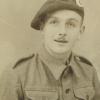Assuming the chairmanship of the Trust in 1998, a number of factors demanded early consideration by the Trustees.
First, externally, the MOD had signalled a reduction in museum funding (effective 2003); next the Defence Review of that year determined that 5 Airborne Brigade would be embedded in a new air manoeuvre formation, 16 Air Assault Brigade, to be based in Colchester; and, finally, the continuing security situation meant that the museum would remain, for the foreseeable future, ‘behind the wire’ – an ongoing deterrent to greater accessibility to the public, a key tenet of our charitable objects.
Internally, there were also constraints. Our heritage was displayed and maintained in a 30 year old building that was no longer fit for purpose. Thanks to the hard work and enterprise of our predecessors, both curators and trustees, the exhibition provided a very good exploration of our history in WW2, but less so post war. We had also run out of space to upgrade our collection; nor was there any ability to recall those of The Regiment and Airborne Forces who had given their lives in service; and we lacked sufficient ‘stories’ to give weight and colour to our past and ongoing exploits.
How then should these realistic concerns be overcome? From many discussions, we determined to look for a new home, having appreciated that to ‘do nothing’ was not acceptable. A study began which, given our nationwide recruitment, considered seventeen sites, against a set of core objectives. These were narrowed to five sites of regimental association: Aldershot, Colchester, Manchester, Middle Wallop and Thruxton. And four sites of wider commercial opportunity: Brooklands, Duxford, Portsmouth and Speke.
At a meeting of the Regiment’s Council on 18th January 2000, from these nine options, a unanimous decision was taken to proceed to investigate fully the opportunity to form a partnership with the Imperial War Museum at Duxford.
Looking back on that time, the emergence of two key individuals significantly aided the subsequent success of our plan. Kay Coates, then Director of the Museum, researched for us a talented group of museum designers, from amongst whose ranks, Nik Boulting of rwdp limited, was selected. And Bernard Cazenove offered me his help in the process of fundraising - without which we would not have succeeded in reaching our challenging target.
After a suitable feasibility study, work began in earnest. It was to be a lengthy process: first to get the concept right and then to raise the necessary funds, given our lack of seedcorn money for the project. Here, the support of our Regimental charities has been invaluable.
The initial concept envisaged a modern, interactive museum, which would be readily accessible to the public: part shrine, part history book and part physical experience. Housed in one building, it would also look forward in time, including an opportunity for industry to demonstrate how advances in technology will alter the air manoeuvre battlefield of the future. But, with rising energy and security costs, both ABFM and IWM agreed that this proposal was too risky, given the unpredictability of the running costs required for a large building of this complexity.
Ongoing dialogue led over time to a revised proposal, which envisaged the museum developing a state of the art archive in an established building to the north of the IWM complex; creating an exhibition space within a self-contained, air-conditioned hall inside the new Airspace building; and a digital archive, enabling us for the first time to provide a virtual history, accessible both on the world wide web – and on touch screen at Duxford and ITC Catterick. When ‘ParaData’ – developed by CogApp - opens, it will be very much work in progress, depending upon contributions from past and present members – and their families - over many years to fill the gaps in our story. This whole programme of work was finally approved by The Council in May 2007, leading to leases and contracts being signed in October of that year, having acquired sufficient funding for Phases 1 & 2.
It has been a colossal team effort involving museum staff, trustees – now significantly expanded to manage an increased workload – RHQ, patrons, fundraisers, sponsors, donors, contractors and, critically, a number of ‘pro bono’ supporters: notably our lawyers who have adopted us as a charity, both at Reed Smith and Regent Legal.
As the Trustees take forward the opportunities afforded by this exciting partnership with the IWM, our remaining aspiration is to develop Phase 3. A single building, housing what we might call ‘The Airborne Warfare Centre’, (heritage, based on the history of military parachuting, team-building activity, and a showcase to the future) . This, of course, will be subject to successful fundraising in these difficult times of economic uncertainty, and cementing the right partnerships to make the building work.
Major General Dair Farrar-Hockley MC Chairman of Trustees & The Appeal Board December 2008
By Major General Dair Farrar-Hockley
Read More




Latest Comments
There are currently no comments for this content.
Add Comment
In order to add comments you must be registered with ParaData.
If you are currently a ParaData member please login.
If you are not currently a ParaData member but wish to get involved please register.